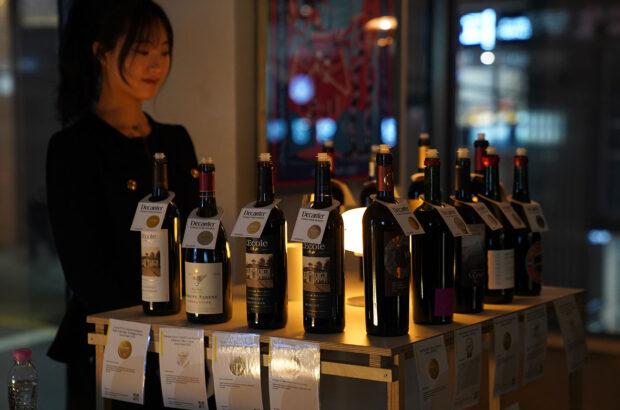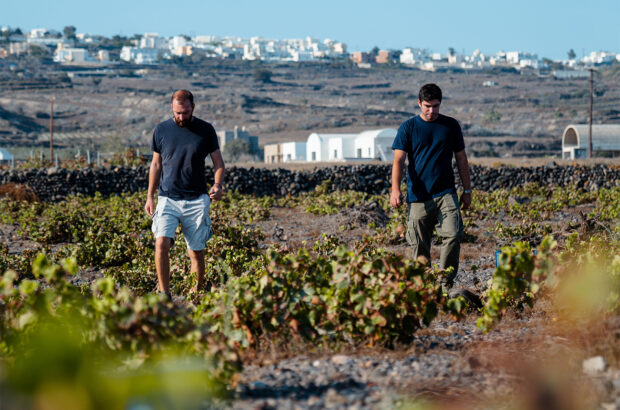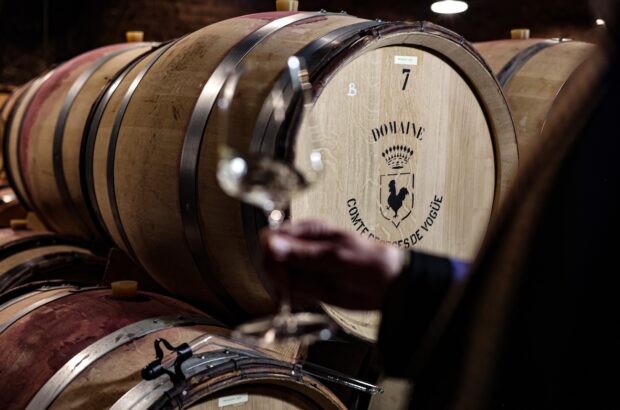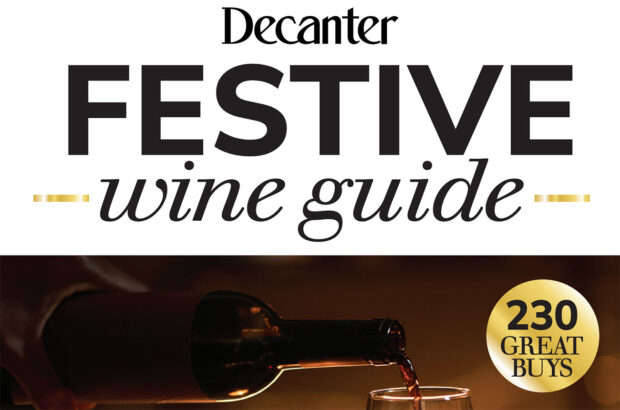Robert Mondavi coined the term Fumé Blanc in the late 1960s to differentiate a style of Sauvignon Blanc, particularly one aged in oak, in California and Washington State.
The varietal has a history in California dating back to the 1880s, but by the 1960s it was seen as a bland variety. Mondavi’s term was an attempt to rebrand it and denote an oak-aged style. The term wasn’t trademarked, allowing others to use it.
While originally associated with oak aging some wineries, like Dry Creek Vineyard, produced unoaked versions.
Today Sauvignon Blanc and Fumé Blanc are considered synonyms in US law, and fewer wines are labelled Fumé Blanc due to changes in the market.
The oldest Sauvignon Blanc plantings in the Americas are at the Robert Mondavi Winery in To Kalon Vineyard.
{"content":"PC9wPgo8aDI+U2F1dmlnbm9uIEJsYW5jIGluIHRoZSBVbml0ZWQgU3RhdGVzPC9oMj4KPHA+UGxhbnRpbmdzIG9mIFNhdXZpZ25vbiBCbGFuYyBkYXRlIGJhY2sgdG8gdGhlIGVhcmx5IDE4ODBzIGluIENhbGlmb3JuaWEmIzgyMTc7cyBMaXZlcm1vcmUgVmFsbGV5LiBDaGFybGVzIFdldG1vcmUgcGxhbnRlZCB0aGUgdmFyaWV0eSBvbiBoaXMgZXN0YXRlIENyZXN0YSBCbGFuY2EgV2luZXJ5OyBhbGxlZ2VkbHksIHRoZSB2aW5lcyYjODIxNzsgc291cmNlIG1hdGVyaWFsIGNhbWUgZnJvbSB0aGUgbGVnZW5kYXJ5IENow6J0ZWF1IGQmIzgyMTc7WXF1ZW0uIFdldG1vcmUmIzgyMTc7cyBmaXJzdCByZWxlYXNlLCBmcm9tIDE4ODQsIHdhcyBhIGRyeSB3aGl0ZSB3aW5lIGZyb20gQm9yZGVhdXggdmFyaWV0aWVzIHRoYXQgd29uIGEgZ3JhbmQgcHJpemUgYXQgdGhlIDE4ODkgUGFyaXMgRXhwb3NpdGlvbi48L3A+CjxwPlNhdXZpZ25vbiBCbGFuYyBtYWRlIGl0cyB3YXkgdG8gTmFwYSBWYWxsZXkgYXJvdW5kIHRoZSBzYW1lIHRpbWUuIFBsYW50aW5ncyBhdCBJbmdsZW5vb2sgaW4gdGhlIDE4ODBzLCBhbmQgQmVhdWxpZXUgVmluZXlhcmQgaW4gdGhlIGVhcmx5IDE5MDBzIGNyZWF0ZWQgZWFybHkgZXhhbXBsZXMgb2YgcXVhbGl0eSB3aW5lcyB0aHJvdWdob3V0IENhbGlmb3JuaWEmIzgyMTc7cyBidXJnZW9uaW5nIHdpbmUgY291bnRyeS4gVGhlIHdoaXRlIHZhcmlldGFsIGhhZCByb290cyBhdCB0aGUgZmFtb3VzIFRvIEthbG9uIHNpdGUgYXMgZWFybHkgYXMgdGhlIDE4OTBzLjwvcD4KPGRpdiBjbGFzcz0iYWQtY29udGFpbmVyIGFkLWNvbnRhaW5lci0tbW9iaWxlIj48ZGl2IGlkPSJwb3N0LWlubGluZS0zIiBjbGFzcz0iaXBjLWFkdmVydCI+PC9kaXY+PC9kaXY+CjxoMj5UaGUgcmlzZSBvZiBGdW3DqSBCbGFuYzxzdHJvbmc+wqA8L3N0cm9uZz48L2gyPgo8cD5CeSB0aGUgMTk2MHMsIFNhdXZpZ25vbiBCbGFuYyBoYWQgZmFsbGVuIG9uIGhhcmQgdGltZXMgaW4gQW1lcmljYSYjODIxNztzIGNvbW1lcmNpYWwgd2luZSBzZWN0b3IuIEJ5IHRoaXMgdGltZSwgaXQgd2FzIGNvbnNpZGVyZWQgYSBibGFuZCB2YXJpZXR5LCBtYWlubHkgdXNlZCBmb3Igc3dlZXQgd2luZSBwcm9kdWN0aW9uIHRvIGZlZWQgY29uc3VtZXJzIG9mIG1hc3MtcHJvZHVjdGlvbiB3aW5lcy48L3A+CjxwPkluIGFuIGVmZm9ydCB0byBzZXBhcmF0ZSBoaXMgd2luZXMgZnJvbSB0aGlzIG5lZ2F0aXZlIGNvbm5vdGF0aW9uLCBNb25kYXZpIGNvaW5lZCB0aGUgdGVybSBGdW3DqSBCbGFuYy4gTW9uZGF2aSYjODIxNztzIHJpZmYgb24gdGhlIExvaXJlIGRlc2lnbmF0aW9uLCBCbGFuYyBGdW3DqSB3YXMgYW4gZWZmb3J0IHRvIGNvbm5vdGUgYSBuZXcgc3R5bGUgb2YgQW1lcmljYW4tbWFkZSBTYXV2aWdub24gQmxhbmMsIGFnZWQgaW4gb2FrIGJhcnJlbHMuPC9wPgo8ZGl2IGNsYXNzPSJhZC1jb250YWluZXIgYWQtY29udGFpbmVyLS1tb2JpbGUiPjxkaXYgaWQ9InBvc3QtaW5saW5lLTQiIGNsYXNzPSJpcGMtYWR2ZXJ0Ij48L2Rpdj48L2Rpdj4KPHA+TW9uZGF2aSB0b29rIHRoZSBGcmVuY2ggd29yZCDigJhmdW3DqeKAmSwgcmVmZXJyaW5nIHRvIGEgc21va2UtbGlrZSB2YXBvdXIgb3Igc3Vic3RhbmNlPHNwYW4gc3R5bGU9Im1hcmdpbjogMHB4OyBwYWRkaW5nOiAwcHg7Ij4sIHdoaWNoIGlzIGFsc28gZW5zaHJpbmVkIGluIHRoZSBuYW1lIG9mIFBvdWlsbHktRnVtw6kgb2YgdGhlIDxhIGhyZWY9Imh0dHBzOi8vd3d3LmRlY2FudGVyLmNvbS5tYXN0ZXIucHVibGljLmtleXN0b25lLXByb2QtZWtzLWV1dzEuZnV0dXJlcGxjLmVuZ2luZWVyaW5nLm1hc3Rlci5wdWJsaWMua2V5c3RvbmUtcHJvZC1la3MtZXV3MS5mdXR1cmVwbGMuZW5naW5lZXJpbmcvd2luZS93aW5lLXJlZ2lvbnMvbG9pcmUvIiB0YXJnZXQ9Il9ibGFuayIgcmVsPSJub29wZW5lciI+PHN0cm9uZz5Mb2lyZSBWYWxsZXk8L3N0cm9uZz48L2E+LCBhbmQgdGhlIEZyZW5jaCB3b3JkIDwvc3Bhbj5mb3Igd2hpdGUsIGFzIGluICYjODIxNjtibGFuYyYjODIxNzsuPC9wPgo8cD5IZSBkaWQgbm90IHRyYWRlbWFyayB0aGUgdGVybSwgbWFraW5nIGl0IHBvc3NpYmxlIGZvciBvdGhlciB3aW5lcmllcyB0byBsYWJlbCB0aGVpciB3aW5lcyBzaW1pbGFybHksIGFuZCBjcmVhdGVkIGEgY2F0ZWdvcnkgaW4gdGhlIHByb2Nlc3MuPC9wPgo8ZGl2IGNsYXNzPSJhZC1jb250YWluZXIgYWQtY29udGFpbmVyLS1tb2JpbGUiPjxkaXYgaWQ9InBvc3QtaW5saW5lLTUiIGNsYXNzPSJpcGMtYWR2ZXJ0Ij48L2Rpdj48L2Rpdj4KPGgyPkFnZWluZyBTYXV2aWdub24gQmxhbmMgd2l0aCBvYWs8L2gyPgo8cD5JbiBvcmRlciB0byBkaWZmZXJlbnRpYXRlIGhpcyBTYXV2aWdub24gQmxhbmNzIGZyb20gdGhlIEFtZXJpY2FuIHZlcnNpb25zIHRoYXQgd2VyZSBtYWRlIGF0IHRoZSB0aW1lLCBNb25kYXZpIGNob3NlIHRvIGFnZSB0aGUgd2luZXMgaW4gYmFycmVsLCB0aGUgdG9hc3RlZCBvYWsgbGVuZGluZyBhIGhpbnQgb2Ygc21va3kgY2hhcmFjdGVyIHRvIHRoZSB3aW5lcywgdGh1cyB0aGUg4oCYZnVtw6nigJkuIFRoZSBzdHlsZSBiZWNhbWUgcG9wdWxhci48L3A+CjxwPk1vcmUgcHJvZHVjZXJzIHN0YXJ0ZWQgYWdlaW5nIHRoZWlyIGRyeSBTYXV2aWdub24gQmxhbmMgaW4gKG9sZCBhbmQgbmV3KSBvYWsgYmFycmVscyBhbmQgc2VsbGluZyBpdCBhcyDigJhGdW3DqSBCbGFuY+KAmS4gV2hpbGUgdGhlIG5hbWUgaGFzIGJlZW4gbW9yZSBjb21tb25seSBhc3NvY2lhdGVkIHdpdGggb2FrLWFnZWQgU2F1dmlnbm9uIEJsYW5jIGZyb20gdGhlIFVTLCBpdCYjODIxNztzIG5vdCBhIHJlcXVpcmVtZW50LiBUaGUgbGFjayBvZiByZWd1bGF0aW9uIGFyb3VuZCB0aGUgdGVybSwgcHJpbWFyaWx5IGNyZWF0ZWQgZm9yIG1hcmtldGluZywgbWVhbnMgaXQmIzgyMTc7cyBvcGVuIHRvIGludGVycHJldGF0aW9uLjwvcD4KPHA+Um9iZXJ0IE1vbmRhdmkg4oCYb25seSBpbnRlbmRlZCB0byBmaW5kIGFuIGFsdGVybmF0aXZlIG5hbWUgZm9yIFNhdXZpZ25vbiBCbGFuYywgd2l0aG91dCBhbnkgaW5kaWNhdGlvbiBvZiB0aGUgcHJvZHVjdGlvbiBtZXRob2QgYW5kIHN0eWxlLOKAmSBhY2NvcmRpbmcgdG8gdGhlIHdpbmVyeS48L3A+CjxwPkN1cnJlbnRseSwgdGhlIHRlcm1zICYjODIxNjtTYXV2aWdub24gQmxhbmMmIzgyMTc7IGFuZCAmIzgyMTY7RnVtw6kgQmxhbmMmIzgyMTc7IGFyZSBkZWVtZWQgc3lub255bXMgaW4gVVMgbGF3LiBJbiB0aGUgU29ub21hIHJlZ2lvbiwgRHJ5IENyZWVrIFZpbmV5YXJkIHdhcyBhbW9uZyB0aGUgZmlyc3QgdG8gcHJvZHVjZSBhIOKAmEZ1bcOpIEJsYW5j4oCZIGluIENhbGlmb3JuaWEgd2l0aG91dCB1c2luZyBvYWsuPC9wPgo8cD5JbnNwaXJlZCBieSB0aGUgbWluZXJhbCwgbGVhbiBhbmQgZnJlc2ggU2F1dmlnbm9uIEJsYW5jIGZyb20gU2FuY2VycmUgb2YgdGhlIExvaXJlIFZhbGxleSwgdGhlIG93bmVyLCBEYXZpZCBTdGFyZSwgZGVjaWRlZCB0byBtYWtlIGFuIHVub2FrZWQg4oCYRnVtw6kgQmxhbmPigJkgaW4gMTk3MiwgYWNjb3JkaW5nIHRvIHRoZSB3aW5lcnkuPC9wPgo8aDI+SXMgRnVtw6kgZmFkaW5nPzwvaDI+CjxkaXYgY2xhc3M9ImluamVjdGlvbiI+PC9kaXY+CjxwPldpdGggTmV3IFplYWxhbmQgY3JlYXRpbmcgYSBnbG9iYWwgZGVtYW5kIGZvciBmcmVzaCwgZHJ5IHN0eWxlcyBvZiBTYXV2aWdub24gQmxhbmMsIHRoZSBhc3NvY2lhdGlvbnMgdGhhdCBNb25kYXZpIGhhZCBob3BlZCB0byBhdm9pZCBoYXZlIGxhcmdlbHkgYmVjb21lIGEgdGhpbmcgb2YgdGhlIHBhc3QuIEFzIGEgcmVzdWx0LCB5b3Ugc2VlIGZld2VyIHdpbmVzIGxhYmVsbGVkIGFzIEZ1bcOpIEJsYW5jIGluIHRoZSBjdXJyZW50IEFtZXJpY2FuIG1hcmtldHBsYWNlLiBXaGlsZSB0aGUgZGVzaWduYXRpb24gc3RpbGwgZXhpc3RzLCBpdHMgbnVtYmVycyBoYXZlIGR3aW5kbGVkLjwvcD4KPHA+VGhlIHdvcmxkJiM4MjE3O3MgZ3JlYXRlc3QgRnVtw6kgQmxhbmMsIHRob3VnaCwgaXMgc3RpbGwgbWFkZSBieSBSb2JlcnQgTW9uZGF2aSBXaW5lcnkgZnJvbSB0aGUgaWNvbmljIEkgYmxvY2sgaW4gdGhlIGZhbW91cyBUbyBLYWxvbiBWaW5leWFyZC4gVGhlIG9sZCwgZ25hcmx5LCBoZWFkLXRyYWluZWQgdmluZXMgcGxhbnRlZCBpbiAxOTQ1IGFyZSBjb25zaWRlcmVkIHRoZSBvbGRlc3QgcGxhbnRpbmcgb2YgU2F1dmlnbm9uIEJsYW5jIGluIHRoZSBBbWVyaWNhcy48L3A+CjxwPgo="}
Related articles







